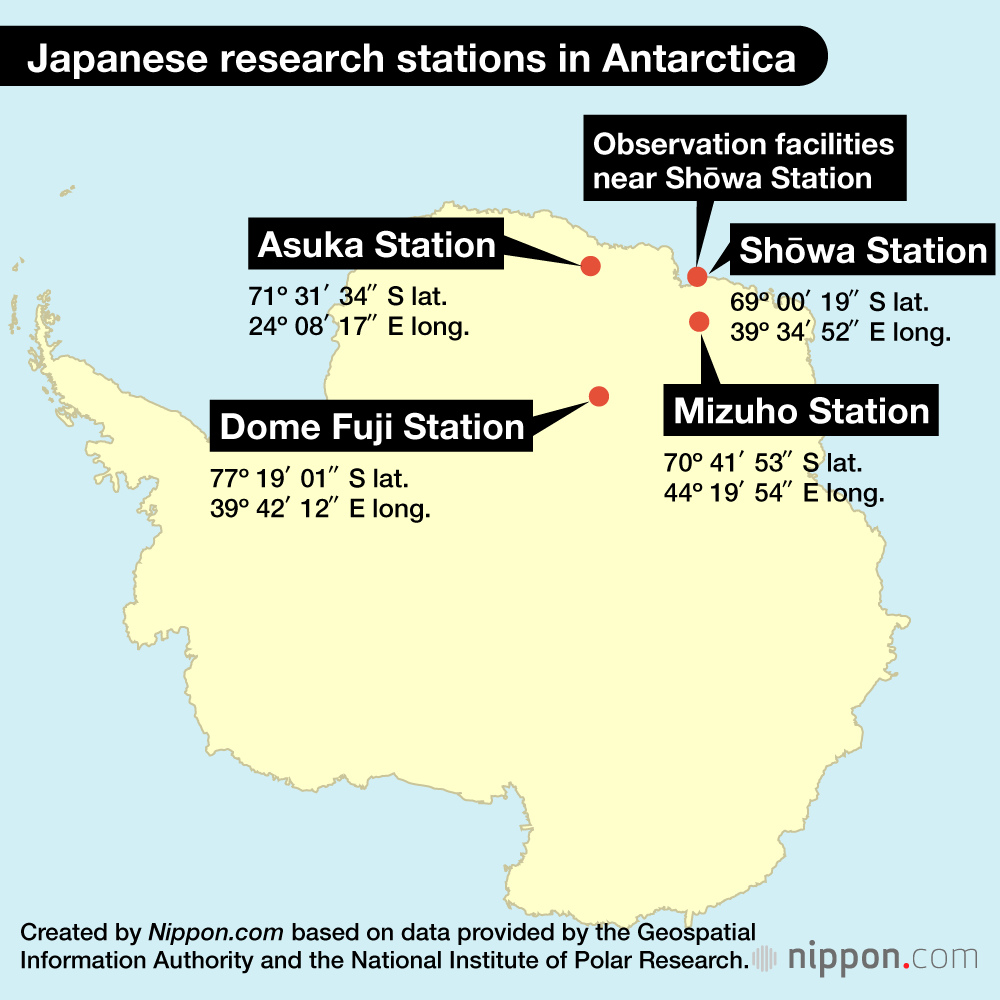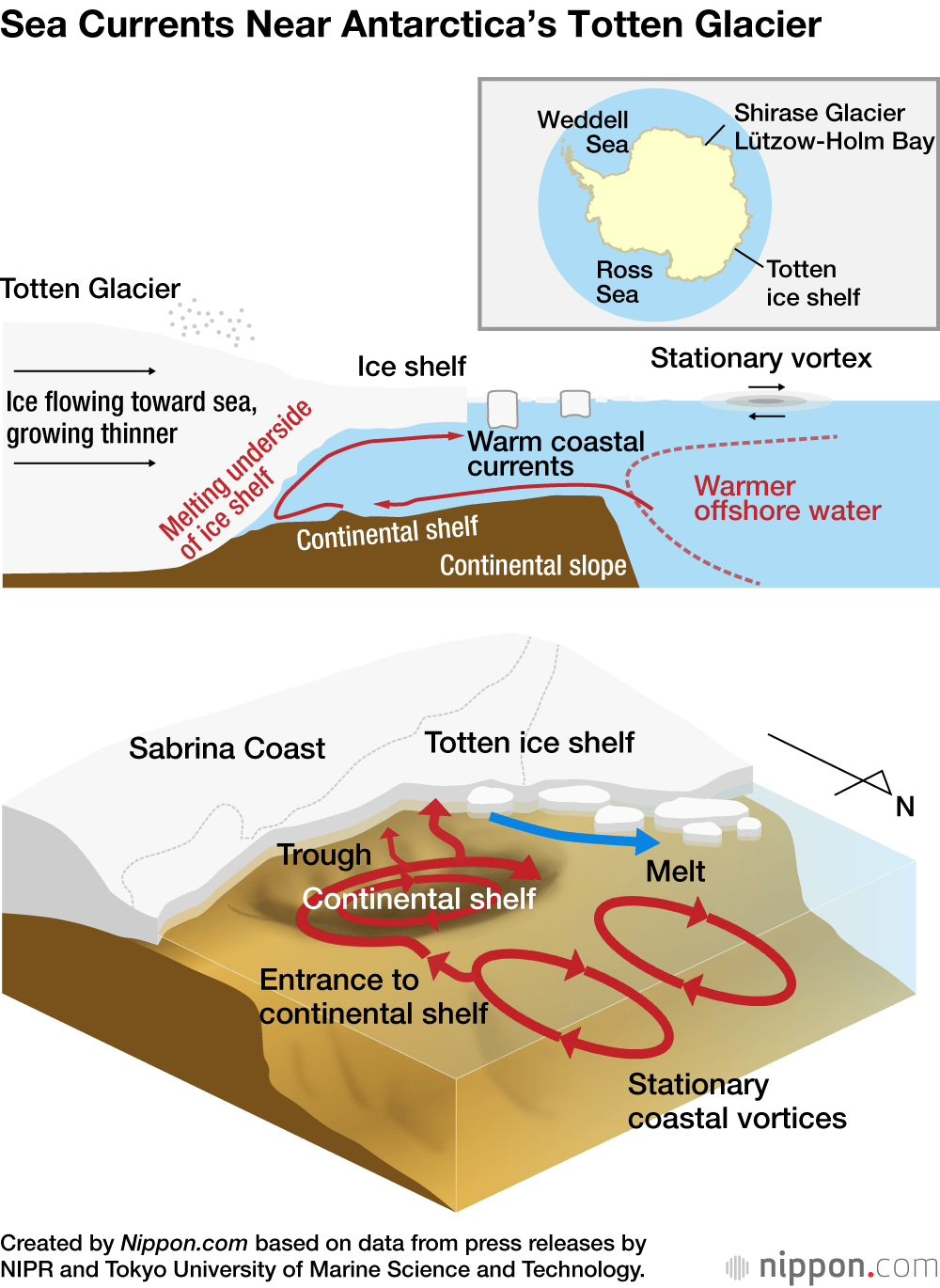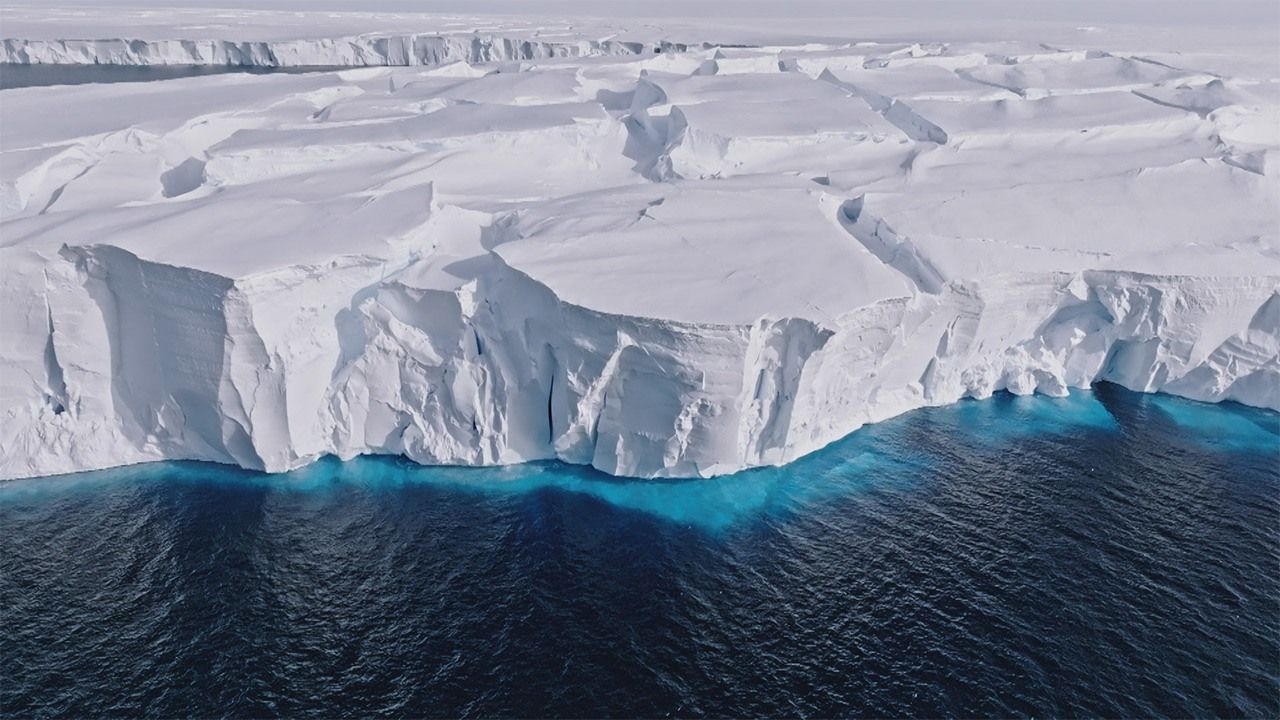
In the “Global Boiling” Age, Japanese Scientists Race to Understand a Melting Antarctica
Environment Science Politics Technology- English
- 日本語
- 简体字
- 繁體字
- Français
- Español
- العربية
- Русский
Research at the Last Frontier
Since December 2023, a team of 100 researchers from the sixty-fifth Japanese Antarctic Expedition (headed by Hashida Gen, director of the National Institute of Polar Research) have been conducting scientific study and research on the continent, which is described as the “last frontier. ” Exactly a year earlier, I travelled to Antarctica with the sixty-fourth expedition as part of a program being made for Fuji Television. On the coast we saw seals, penguins, entirely white snow petrels, and seascapes broken up by icebergs of all sizes. When we ventured inland, though, we were greeted by a completely different world, with nothing but flat, white expanses of ice for as far as the eye could see. Here there is just an expanse of empty space, devoid of all animals and plant life. The wind is constant, and the only sound is the hiss of ice crystals scudding along the surface. When the wind occasionally dies down, you find yourself enveloped in a silent world.
Even in February, the warmest month of the year, temperatures do not rise above –15° Celsius. The weather is changeable. I was filming the researchers when a blizzard flared up. I tried to brace myself against the wind, but with nothing to hold onto, I was nearly blown over by the gales. I was lucky not to be sent flying across the ice. While I finally managed to crawl back to the snowcat, it was a scary experience. I learned that even highly experienced researchers put their lives on the line here.
While modern equipment means that Antarctic research is significantly safer than it used to be, the continental interior remains a formidable place. While on Antarctica, I had to contend with burns around my eyes from the direct sunlight and glare, and cracked lips and fingernails from the extremely dry air. One day I removed my sunglasses for 30 minutes, only to wake up the next day with eyelids so sore that I couldn’t open them. Such is the punishing environment in which the research team works so industriously.
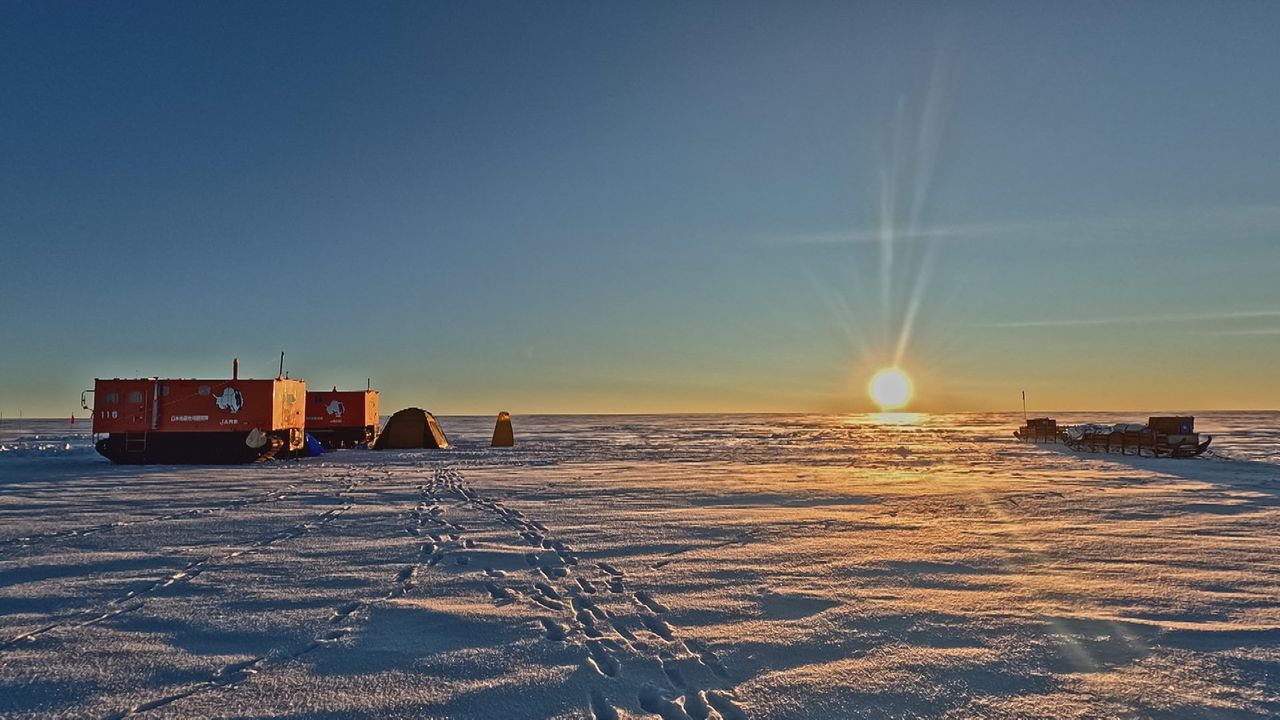
While scientists once used dog sleds to travel to the inner reaches of Antarctica, these days they chiefly use snowcats, sometimes spending months at a time camped inside their vehicles. (Courtesy Fuji Television)
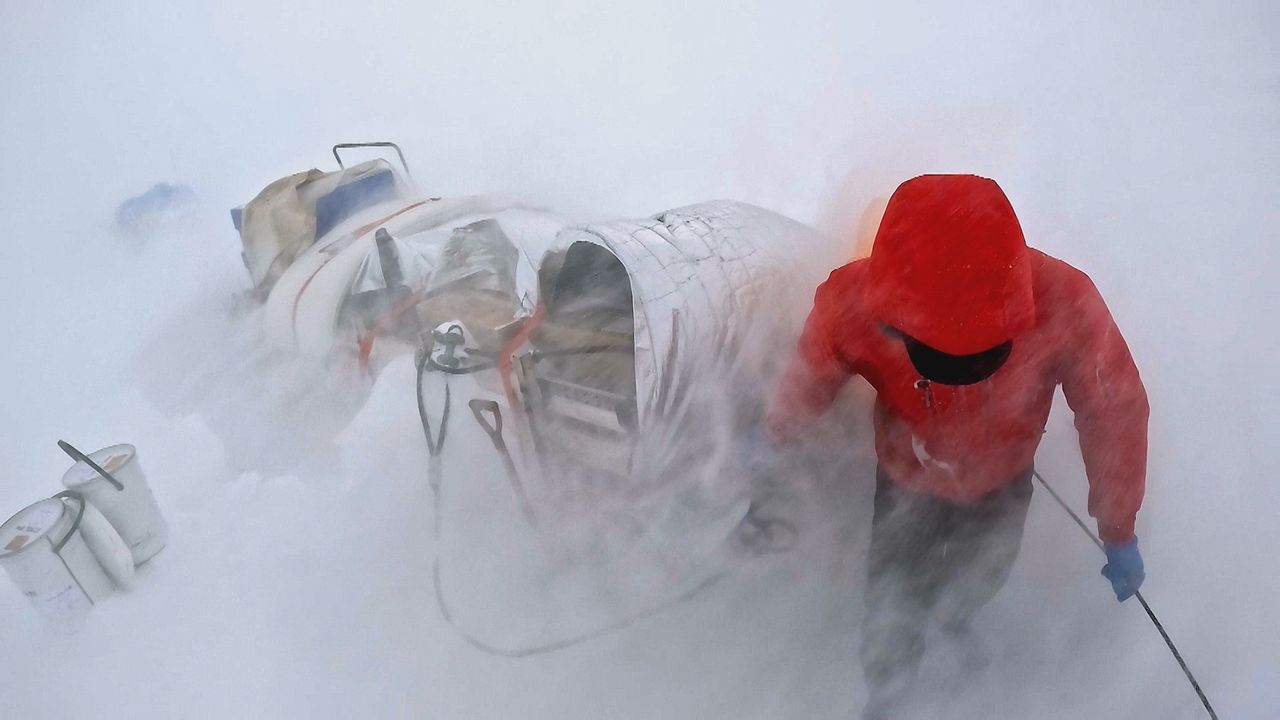
A researcher clings to a rope during a blizzard. (Courtesy Fuji Television)
Most Rugged Territory Allocated to Japanese Researchers
Japanese scientists began performing observations on Antarctica in 1956. The Japanese government’s announcement a mere 10 years after the end of World War II of its plans to perform Antarctic research met with a cool reception from Western nations. The most treacherous areas in East Antarctica, those allocated to the former Axis powers at the time for their science, were said to be impenetrable by the icebreakers of the time. With support from many companies and individuals, however, the first Antarctic research exhibition (led by Nagata Takeshi) landed in Lützow-Holm Bay in Queen Maud Land and successfully established the Shōwa Station research facility on the Flatvaer Islands there in 1957. Their ship, the Sōya, is displayed at the Museum of Maritime Science in Odaiba, Tokyo. The second expedition, which set off the following year, was forced to turn back due to thick sea ice. The researchers were forced to abandon their sled dogs, who were left chained up. When the scientists returned over a year later, however, two of the dogs (Taro and Jiro) had miraculously survived. The story inspired the nation and was later made into a movie.
In addition to Shōwa Station, subsequent expeditions have also been based at Dome Fuji Station (completed in 1996 inland from the Shōwa site), as well as other locations. To date, Japanese expeditions have been responsible for the discovery of the hole in the ozone layer that protects the earth from ultraviolet radiation, retrieved and studied meteorites, and collected and analyzed ice cores to gain data on hundreds of thousands of years of climate shifts.
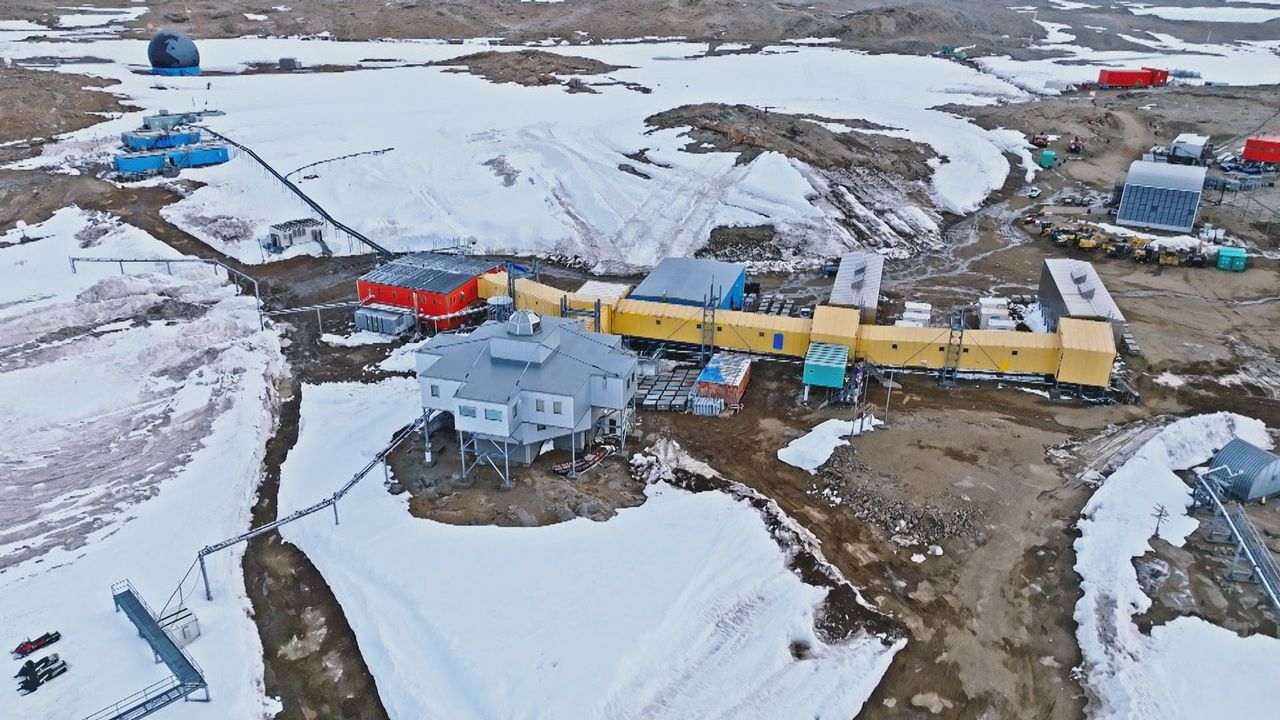
Japan’s Shōwa Station in Queen Maud Land, Antarctica. (Courtesy Fuji Television)
Robots Shed Light on Rapidly Melting Ice Shelves
Seventy years later, Japan’s research activities in East Antarctica have taken on an even greater importance. This is because the majority of Antarctica’s ice lies in East Antarctica (also known as Greater Antarctica), which is where the Japanese research stations are located. If the Antarctic ice sheet, the thick frozen layer that covers the continent, were to melt completely, it is said that the global sea levels would rise by around 60 meters, with East Antarctica contributing about 50 meters of that. This gives you an idea of just how much ice is here. While the ice sheet on the east side of the continent was traditionally seen as more stable, that view is changing.
One major objective of the sixty-fourth Antarctic exhibition that I accompanied was to elucidate the mechanism that causes East Antarctic ice to melt. The team, comprising geologist and NIPR Assistant Professor Fujii Masakazu, robotics expert and University of Tokyo project researcher Yamagata Hirokazu, and assistant engineer Yamamoto Kazushi, was the first ever from Japan to use an autonomous submersible robot to understand the mechanism that causes Antarctic ice to melt. The study aimed to gather data on the rate at which the lower surfaces of ice shelves, ice sheets that jut out into the sea, are melting. To calculate the volume of Antarctic ice that has melted, scientists measure the thickness of the ice, chiefly using satellite data, and assume that the degree of thinning is equivalent to the degree of melting.
In recent years, however, scientists have discovered that in addition to the upper surface of the ice that covers the continent, the bottoms of the ice shelves are also being eroded by water flowing beneath them, causing them to melt rapidly. By observing currents and water temperatures under ice shelves, researchers are attempting to calculate the melting energy applied, and thereby calculate the volume of ice that has melted and the rate of melting.
Using robots to survey thick ice is no mean feat. They need to be controlled wirelessly, as cables would get snagged on the ice, rendering the robots irretrievable. Underwater, however, smooth wireless communication is not possible either. The robot therefore needed to be autonomous, that is, able to navigate independently by analyzing seabed terrain and other cues. In these harsh conditions, with water temperatures of around –2° Celsius, creating a risk that the submersible will freeze the second it surfaces, electronics are constantly breaking down. Attending to technical issues as they arise, the research team was able to successfully recover water temperature data and seabed terrain.
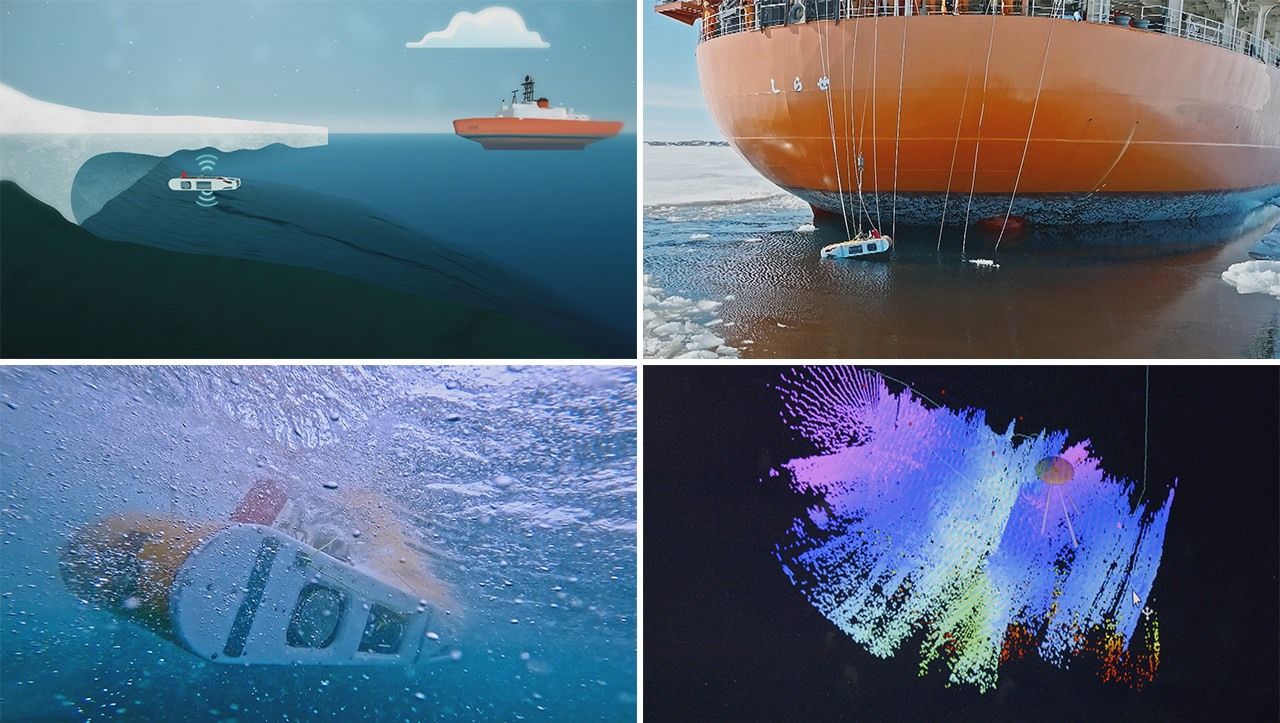
On the sixty-fourth expedition, ice melt research was performed using the MONACA (Mobility Oriented Nadir AntarctiC Adventurer) autonomous submersible robot. After the submersible has been lowered into the sea from the Antarctic observation vessel Shirase, it dives under the ice and gathers data on the terrain of the sea floor (bottom right). (Courtesy Fuji Television)
The Giant Vortices Melting the Glaciers
The current expedition continues to work to uncover the melting mechanism for East Antarctic ice. Researchers also aim to take readings on the Totten Glacier, one of the largest in East Antarctica. Satellite and other data have shown that the Totten Glacier is melting faster than any other glacier in East Antarctica. It is believed that were the entire glacier to melt, global sea levels would rise between 3 and 4 meters.
Findings by Tokyo University of Marine Science and Technology Associate Professor Mizobata Kōhei and his team based on data from an oceanic survey performed near the Totten Glacier in 2017–21 by a joint Japanese, American, and Australian team identified multiple, giant clockwise vortices off the coast, and discovered that these vortices were propelling warm water towards the glacier. Extending vertically from the sea floor to the surface and measuring 150 to 200 kilometers in diameter, the vortices are more or less stationary. Further research on the seabed terrain is needed to understand how the vortices came into being. Similar vortices may be discovered in the seas around Antarctica, and the more gyres that are discovered, the easier it becomes to estimate the rate at which the ice will melt. Because the temperature of the warm water thrown out by the vortices is not constant, however, collecting 10 years of data is another challenge.
It is hoped that by elucidating the mechanism by which the ice sheets are melting and accurately determining the rate of melting, we will become able to more accurately forecast future sea level rises and climate change.
Ancient Ice Predicts Tomorrow’s Climate Change
In addition to understanding the mechanism by which ice in East Antarctica melts, another important aim of Japan’s Antarctic research is the collection of core samples from some of the world’s oldest ice. The ice sheets from which these ice cores are taken are the product of many years of snowfall. Described as time capsules that contain particles of air from hundreds of thousands of years in the past, these ice cores enable us to guess what the climate, temperature, and atmospheric composition was at the time.
In 2006, Japanese researchers retrieved 720,000-year-old ice from an ice sheet 3,000 meters thick. They now aim to sample 1-million-year-old ice. The sample will be taken from a site near the Dome Fuji research station in an Antarctica: it took six years just to decide where to take the sample. The station got its name because the thickness of the ice sheet at the station site—3,700 meters, roughly the same as the height of Mount Fuji. Researchers believe that they will be able to collect million-year ice cores at a depth of approximately 2,700 meters.
By studying the Earth’s climate a million years ago, researchers are trying to find out how much of the planet was covered by ice during the ice ages and how much sea levels rose in the interglacial period, and use those findings to predict climate change. While between 1.6 and 1.2 million years ago ice ages and interglacial periods alternated on a 40,000-year cycle, years, the period of this glacial-interglacial cycle currently sits at a much longer 100,000 years. It is hoped that the sampling of million-year-old ice cores will enable scientists to understand the mechanism that caused the cycle to slow. If everything goes well there are plans to extract the sample by 2028.
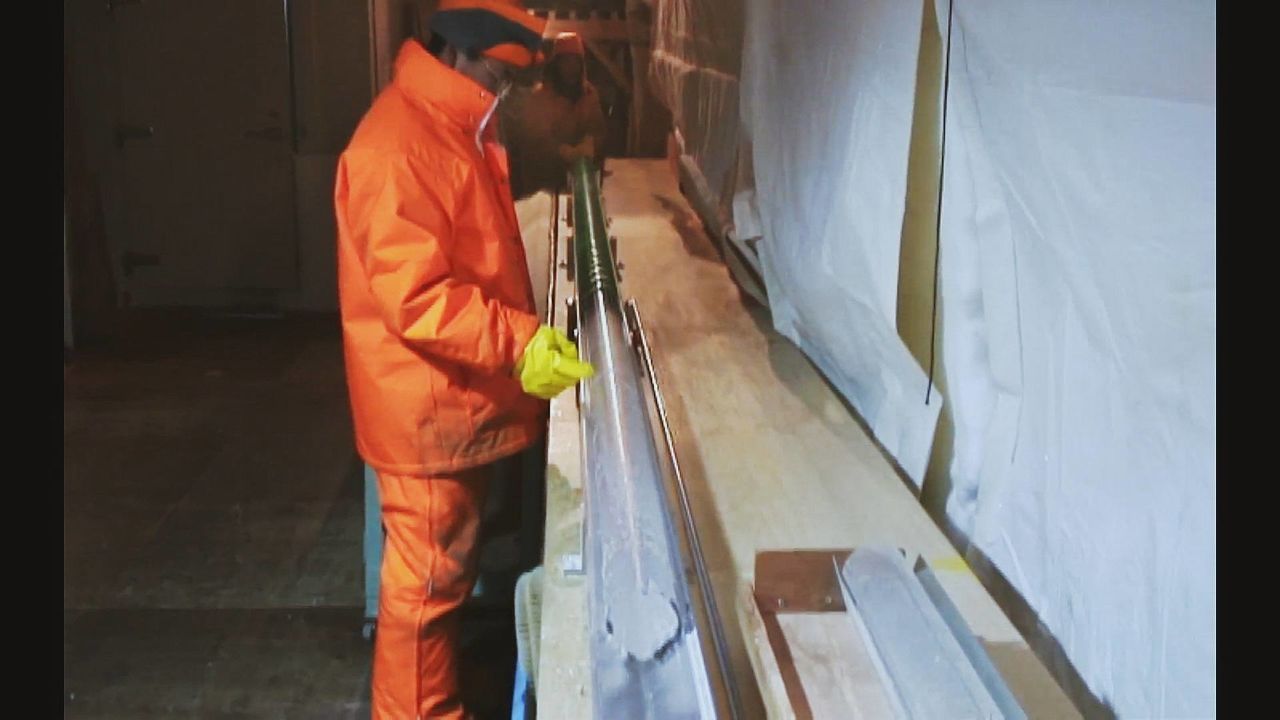
Sampling a 720,000-year-old ice core. (© NIPR)
Colorful Sea Creatures Near Shōwa Station
During the sixty-fourth expedition in 2022–23, a research team led by Kyoto University Associate Professor Ichikawa Kōtarō surveyed marine life in Antarctic waters. The team’s findings are still being analyzed. The media representatives on the expedition became the first ever TV crew to use a submersible drone to film the waters near the Shōwa base. Our footage showed a rich ecosystem full of colorful and diverse creatures. One fish caught by the team (an emerald rock cod native to Antarctica) was found with a large number of eggs in its mouth. Ichikawa and his team are studying the finding, which they believe may be a case of egg eating behavior evolved as a mechanism to survive in extreme, nutrient-poor environments.
Ichikawa says that almost no research has been performed on the organisms living in such waters, where 99% of sunlight does not reach. He has posited the hypothesis that fish in environments that differ drastically in summer and winter survive the harsh winters by entering a hibernation-like state.
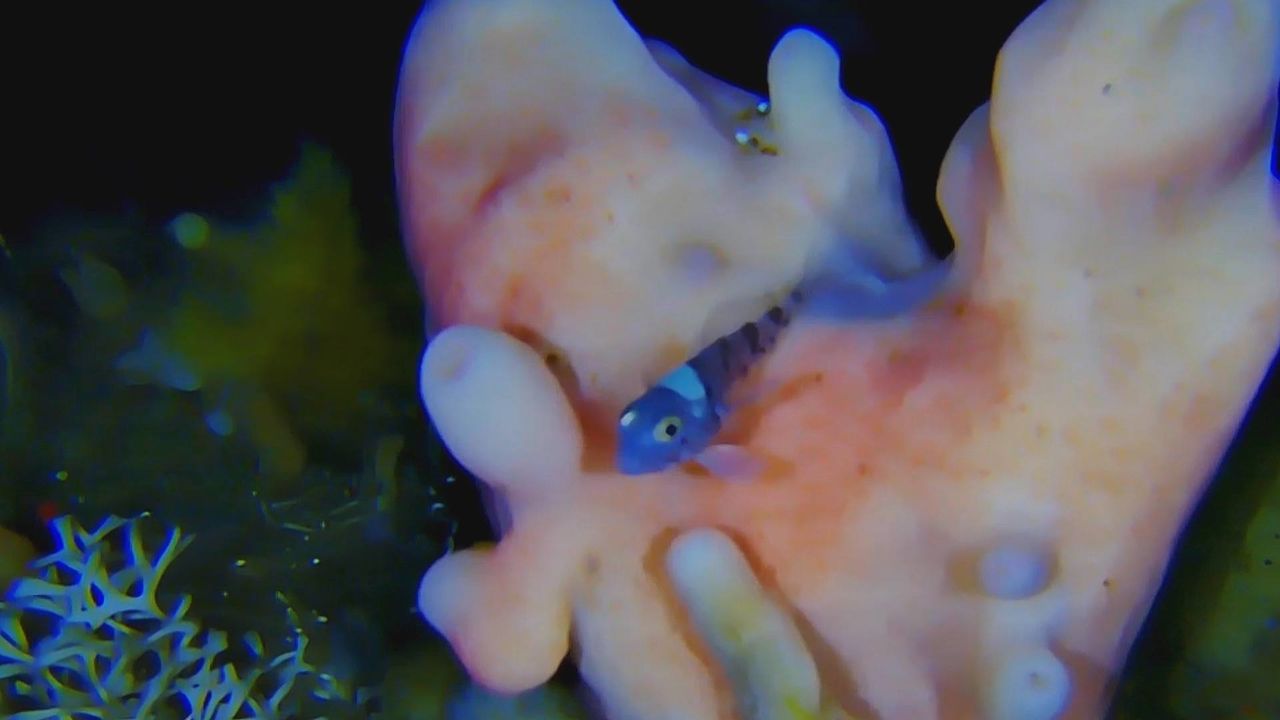
An emerald rock cod in the waters near the Shōwa station. (Courtesy Fuji Television)
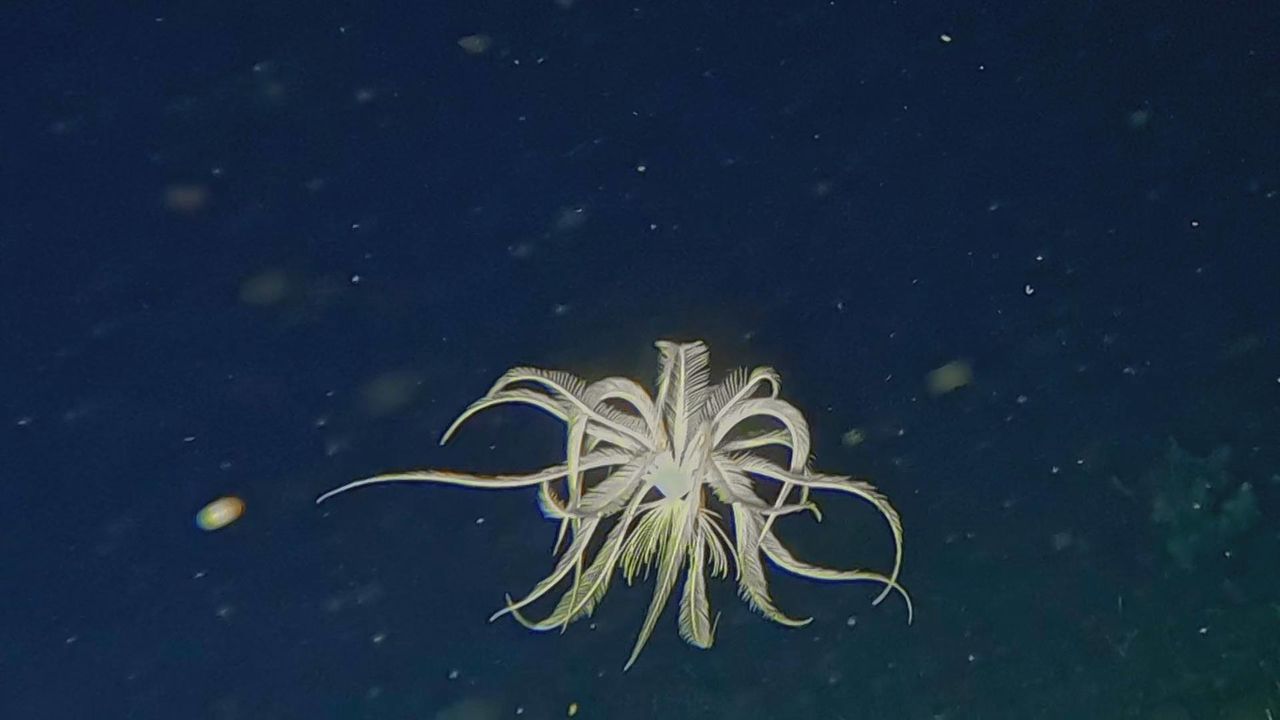
This relative of the starfish swims by extending its arms like a flower. (Courtesy Fuji Television)
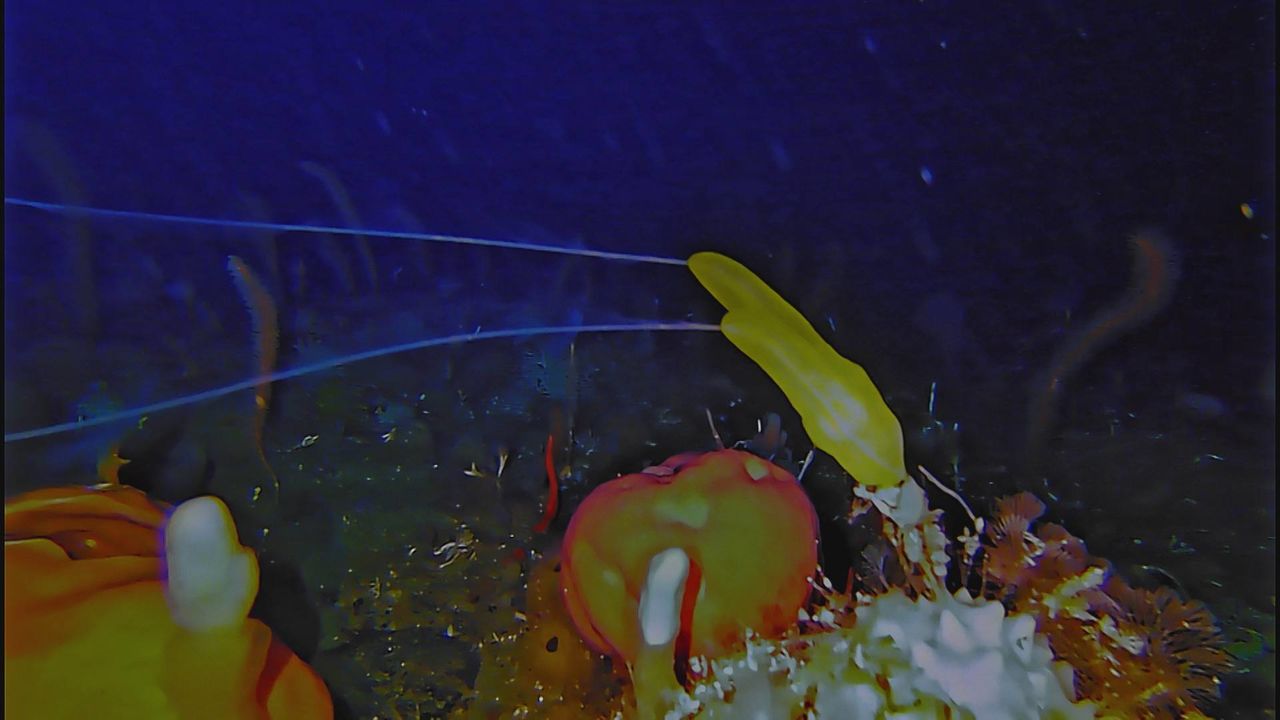
This jellyfish never swims, instead catching prey using the white tentacles that extend from its yellow body. (Courtesy Fuji Television)
Stopping Global Warming
In November 2023, UN Secretary General António Guterres, who was visiting Antarctica ahead of COP28, warned of the danger of the melting ice caps, and called on world leaders to fight climate change. While, in spite of Gutterres’ warning of “global boiling,” the world may not yet be united against climate change, we have pulled together to save the environment in the past. Concerned about the ozone hole above Antarctica that was discovered by a Japanese research team in the 1980s, leaders around the world succeeded in creating rules to limit the production and consumption of chlorofluorocarbons. This decision is now paying off, with the UN Environment Program stating on January 2023 that the ozone layer was on track to make a full recovery in the next few decades. If, in the same way, further advances in climate change research are able to remove all avenues for disputing the causes or mechanisms of global warming, I believe that humankind will be able to once more join forces to implement a solution. Part of that research is being performed by Japan’s Antarctic research team, who continue their hard work on a continent that can get as cold as –80° Celsius.
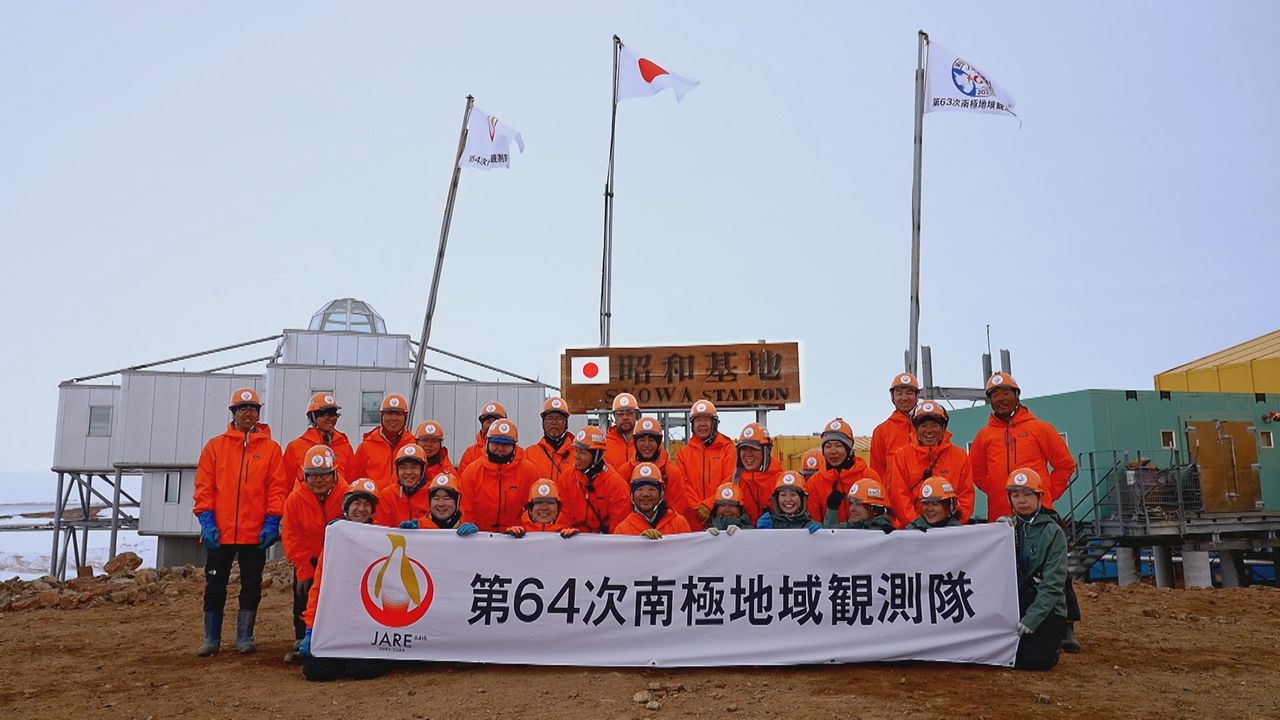
Part of the sixty-fourth Antarctic expedition: Around 30 members of the team wintered in Antarctica until they were relieved over a year later. (Courtesy Fuji Television)
(Originally published in Japanese. The banner photo and all other images in this article other than diagrams are taken from the Fuji Television program Chikyū saigo no hikyō Nankyoku Tairiku: Kansokutai ga mita shinpiteki na sekai [Antarctica, the Last Frontier: The Mysterious World Seen by the Research Expedition]. Courtesy Fuji Television.)
